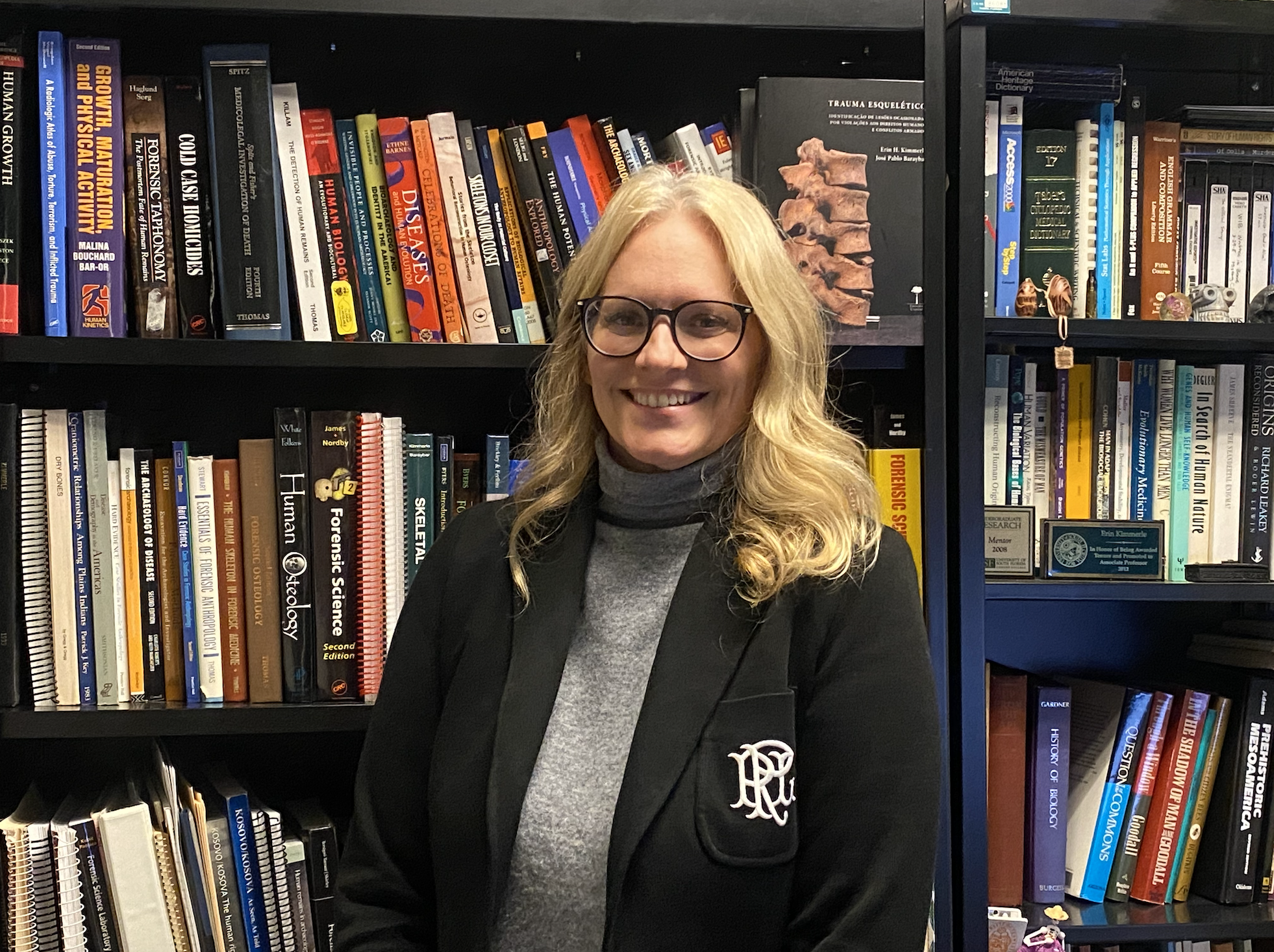Anthropology professor mixes activism with science

When anthropology professor Erin Kimmerle was approached by Hillsborough officials to research unmarked burial grounds in the county, she saw an opportunity to reconnect Tampa with its forgotten history.
“There’s a lot of towns today that are either ghost towns or absorbed into Tampa and don’t exist anymore,” she said. “But those places used to be their own communities. So there’s lot of people who ultimately are impacted, whether they realize that or not, because they don’t know their heritage.”
Related: USF Library dean finds ways to combine passion and work – The Oracle
For Kimmerle, work at the Dozier School became an unintentional start to a future project, What Lies Beneath, a multiyear research initiative into the unmarked burial grounds around Hillsborough county. The investigation was then turned into an exhibit which resided at USF Tampa’s sociology building from last September until January.
What Lies Beneath began when Kimmerle was approached by Hillsborough County after the Tampa Bay Times reported on a Tampa apartment complex being built on a long-forgotten cemetery.
“I had done this project at the Arthur G. Dozier School for Boys in Marianna, which is what [Colson Whitehead] had fictionalized,” said Kimmerle. “We did the initial research for it, and that involved looking for a historic burial ground.”
“That investigation was a rare bridge between a historic project and a modern forensic project. Even though the boys had gone missing between the 30s and 40s, their families have been searching ever since.”
Now wondering how many forgotten burial sites the county contained, officials asked Kimmerle to conduct a survey of possible unmarked burial grounds in the area.
Kimmerle’s journey into forensics began in 1990 as an undergraduate at Hamline University in St. Paul, Minnesota. She said Hamline professor Susan Meister’s passion for the work became an inspiration to her.
Upon graduating 1994, Kimmerle found herself entering her work field during a boom in international research. Before making the decision to go back to school to get her masters, she spent time working at the Natural History Museum in Washington D.C. doing skeletal analysis to deliver the remains of Native Americans back to their reservations.
“I did that for two years and to this day, it’s been my favorite job,” Kimmerle said. “I loved the idea that you could use science to enforce human rights. That’s what really drew me down this path.”
Related: Former student governor persists in passion for student body, community – The Oracle
Making the return to education and obtaining both her masters and doctorate in anthropology, Kimmerle came to USF in 2005 to begin her clinical practice. While she started in forensic consulting, within a year she was brought on to her first project at the university.
She began developing new methods and protocols for Nigeria’s first ever forensic science program. In 2019, she was asked to begin research on Hillsborough’s unmarked burial grounds – work that would soon become What Lies Beneath.
“If you’re someone who’s not thinking about this kind of stuff all the time, you would probably wonder why there are so many of these burial grounds unmarked and buried over,” Kimmerle said. “Every county in the state probably has at least 100 unmarked burial grounds.”
“They’re common, but there’s not a lot of protection for them. They’re not treated as sacred sites.”
After uncovering an additional 40 unmarked burial sites, Kimmerle and her colleagues made the decision to present the research to the public. Because she knew that her department offered a course in museum studies, she took the opportunity to get students involved in the work.
“The students came out, and they were so involved in doing every aspect of the work and putting it into practice,” she said. “So it’d be much too massive for one or two faculty members, it was the students that made everything possible.”
Liotta Noche-Dowdy, one of Kimmerle’s graduate students, was asked to come on the project while taking the museum studies course. Noche-Dowdy said that Kimmerle’s openness to new ideas cultivated a project where innovation and accessibility were the main priorities.
Related: Fortified Bulls: Inside USF’s self defense club – The Oracle
From the display of the Dozer school’s century of crosses to a tapestry of death certificates, no idea was unimaginable in the eyes of Kimmerle.
“It was such a cool project to be part of, because no idea was off the table,” Noche-Dowdy said. “Even in her class, she wanted to hear every idea, even if it wasn’t conventional. And then we would come together and figure out the best way to bring it to life.”
While the exhibit may be out of public view for now, Kimmerle and her colleagues have begun the search for a new place for the What Lies Beneath.
Although its time at USF is over, she hopes that those who attended feel inspired to return back with the same hunger for knowledge.
“This exhibit has brought in more folks from the community who wouldn’t normally come here on a day-to-day basis than any other exhibit we’ve seen in our department,” she said. “I think that it really reflects so much of USF submission in terms of community engagement.”







